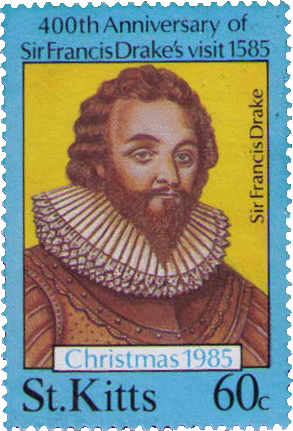Originally posted 06 August 2012
The earliest named rum drink we know of in the Spanish Caribbean is the Draquecito or “Little Dragon,” a mixture of rum, sugar, mint, and lime. The drink was said to be named after either Sir Francis Drake or one of his Captains, Richard Drake. (At least one rum company has claimed that this drink was named by Sir Francis instead of after him, which is extremely farfetched.)
 Why anyone in the Spanish colonies would name a drink after someone who pillaged Spanish ships is an excellent question. Though the pun on Sir Francis Drake’s name (Drake and Draque) is most often cited, it may be that the bad rum that was most common in those colonies made one’s mouth burn like a dragon’s.
Why anyone in the Spanish colonies would name a drink after someone who pillaged Spanish ships is an excellent question. Though the pun on Sir Francis Drake’s name (Drake and Draque) is most often cited, it may be that the bad rum that was most common in those colonies made one’s mouth burn like a dragon’s.
The earliest citation I have seen for the Draquecito is from the work of Cuban poet and novelist Ramón de Palma, who referred to the Draquecito in an 1838 book; the main character drank one of the cocktails daily as a preventive medicine. At some point around 1860, the name of the drink changed from Draquecito to mojito – but why, exactly? The usual answer I have seen is that the draquecito was made with aguardinte or garapo, while the mojito was made with rum. At this time aguardiente was a generic term for strong liquor, while garapo was literally a drink of unfermented cane juice but was apparently also Cuban slang for cheap unaged rum. Thus it appears that if you made this drink with bad rum it was called a Draquecito, but if you made it with something you didn’t mind serving to guests it was a mojito. By that name it became a favorite with Hemingway and his crowd, and went on around the world.
